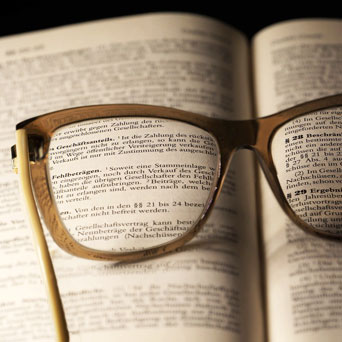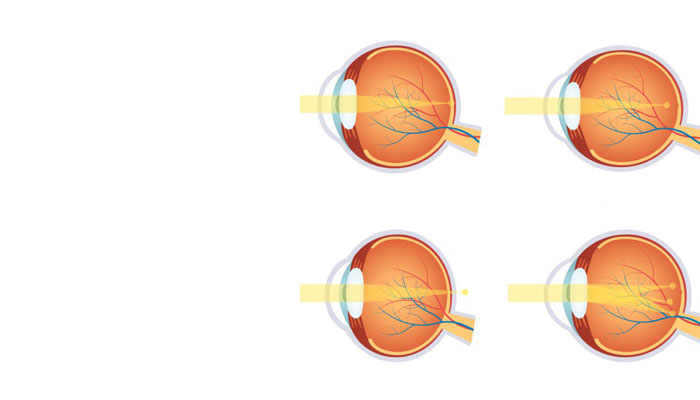Detect ametropia
Vision problems usually are caused by an anomaly in the cornea, the crystalline lens or the retina. Headache, ocular fatigue, difficulty driving or difficulty reading a newspaper are warning signs.
Vision problems are called “ametropia” or refractive errors: myopia, hyperopia, astigmatism and presbyopia.
In the interest of prevention, you should consult an ophthalmologist, an eye specialist who will conduct an examination and screen for pathologies. Do not wait for the first symptoms, eye checkups should be performed regularly from earliest childhood.




Headaches, tingling, blurred vision or inaccurate persist far and near? You may be ASTIGMATIC.
Contrary to popular belief, astigmatic eye does not see distorted. According the different directions of gaze, the sharpness (or blurring) is not uniform. For example, the eye can see perfectly fine net the vertical bar of a letter E and see completely blur the horizontal bars, or vice versa.
Watch out ! You can be astigmatic and myopic or hyperopic at the same time. It’s your fate, like 15% of the French population.
Put simply, with this type of ametropia, the surface of the cornea is not round like a football. An astigmatic eyeball looks more like a rugby ball because it is shaped like an ellipse.
Eyeglasses no longer are prosthetics: technology and design have changed that perception. What’s more, innovations in lens making have shattered the “coke bottle” image. If we tell you about unifocal, toric lenses with appropriate coating, you will reply that all you want is perfect vision, maximum comfort and an enhanced self-image. Today, not being astigmatic could deprive you of the pleasure of wearing eyeglasses. Come and see us. You will be a happy astigmatic…


